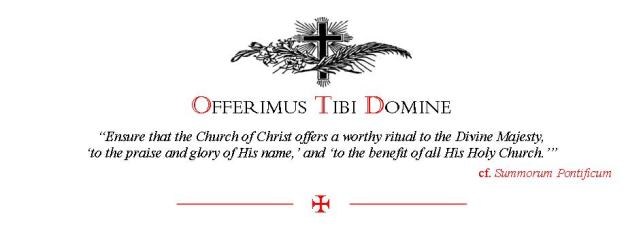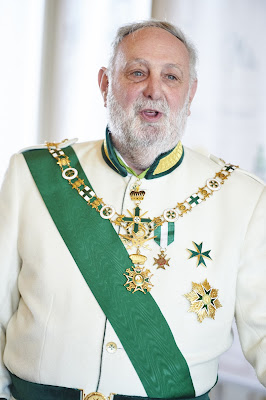Some further details of the
Chavagnes Summer Conference
1st - 5th August 2016
The Virgin Mary in liturgy, literature and life.
Chavagnes International College,
Chavagnes en Paillers, France.
A conference on the occasion of the
300th anniversary
300th anniversary
of the death of
St Louis Marie Grignon de Montfort
Bishop Athanasius Schneider:
“The Blessed Virgin Mary and the Defence of the Faith”
Ferdi McDermott:
“Mary as the air that we breathe: the legacy of St Louis Grignon de Montfort”
“Mary as the air that we breathe: the legacy of St Louis Grignon de Montfort”
Father Mark Lawler:
“G.K. Chesterton on Mary and the Church.”
“G.K. Chesterton on Mary and the Church.”
Father Bede Rowe:
“Mary as at Ark of the New Covenant”
“Mary as at Ark of the New Covenant”
Father Jason Jones:
“Mary in the Teachings of St John Paul II”.
“Mary in the Teachings of St John Paul II”.
Father Michel Favalier, FMI :
“The Venerable Louis Marie Baudouin
and the spirituality of the Incarnation”.
and the spirituality of the Incarnation”.
Gerhard Eger:
“Mary in the Teachings of St John Paul II”.
“Mary in the Teachings of St John Paul II”.
Donal Foley:
“Our Lady of Fatima and the Church, 100 years on.”
“Our Lady of Fatima and the Church, 100 years on.”
The College Chapel during a visit of the Diocesan Bishop.
The programme of talks and other things of interest is below. Al looks very interesting and some trips out. I suspect that there will be a good atmosphere of friendship, liturgical celebration and interesting conference talks.
You can access the College website for further information.
You can book directly online here.
Monday 1st August
Transport from airport in Nantes arranged free of charge.
18.30 Apéritif
19.00 Dinner
20.45: Optional outing to The Priory of Grammont (founded by Richard the Lionheart) for a Concert of Gregorian chant and polyphony with the ensemble ‘Les Chants de Garonne.’. (Return about 11pm)
Tuesday 2nd August
Early morning private Masses
8.00- 8.45: Buffet English/continental breakfast.
From 9.00: Registration, administration, socialising.
10.00: Welcome session, with opening remarks from Ferdi McDermott, Father Mark Lawler, Bishop Schneider and other members of the speakers’ panel.
10.45: Coffee
11.15: "Mary as the air that we breathe": Conference on the spiritual legacy of St Louis Marie Grignon de Montfort. Ferdi McDermott.
12.15: Solemn High Mass, in the Extraordinary Form.
13.30 : Lunch
14.30: "Our Lady as the Ark of the New Covenant", Father Bede Rowe.
15.30: “The Blessed Virgin Mary and the Defence of the Faith”, Bishop Athanasius Schneider.
17:00 Tea
18.15: Sorrowful mysteries of the Rosary
18.30: Vespers
19.00 Apéritif
19.30 Dinner
21.15: Compline
Wednesday 3rd August
Early morning private Masses
8.00- 8.30: Buffet English/continental breakfast.
8.45: "Our Lady in English Letters", Ferdi McDermott.
9.30: Votive Mass of Our Lady, celebrated by Bishop Schneider in the Extraordinary Form.
11.00: Depart for Mortagne sur Sèvre by coach (with the Glorious mysteries of the Rosary during journey.)
11.30 Arrive at Mortagne sur Sèvre.
12.00-15.00: Lunch aboard the historic Restaurant car of the Orient Express (Chemin de Fer de la Vendée), with train ride.
15.00: Coach ride to St Laurent sur Sèvre.
15.15: Arrive St Laurent sur Sèvre for pilgrimage visit to the tomb and Shrine of of St Louis de Montfort.
16.30 Tea
17.00: “Our Lady of Fatima and the Church: 100 years on”, Donal Foley. 18.00: Vespers and Benediction.
19.00: Apéritif
19.30: Dinner
21.15 Compline
Thursday 4th August
Early morning private Masses
8.00- 8.45: Buffet English/continental breakfast.
9.00: "Mary in the teachings of St John Paul II"; Father Jason Jones.
10.00: "The Venerable Louis-Marie Baudouin and the spirituality of the Incarnation"; by Father Michel Favalier, FMI. (Followed by a brief visit to Father Baudouin’s tomb.)
11.00 Coffee
11.30: “Mary as Model of the Church in the writings of G.K. Chesterton”, Father Mark Lawler
12.20: Mass of Feast of St Jean Marie Vianney, in the Ordinary Form.
13.40: Lunch
14.40 : “Approaching Mary through the Liturgy”, Gerhard Eger
16.00 : Concluding reflections, discussion, questions:
Bishop Athanasius Schneider, Ferdi McDermott.
17.00: Tea
17.45: Joyful mysteries of the Rosary.
18.00: Pontifical Vespers
19.00 Aperitif
19.30 Dinner
21.15 Compline
Friday 5th August
Early morning private Masses
From 7.30-9.30; Buffet continental breakfast
Transport to airport, or stations, etc.
St Laurent sur Sèvre: the tomb and Shrine of of St Louis de Montfort.





























































